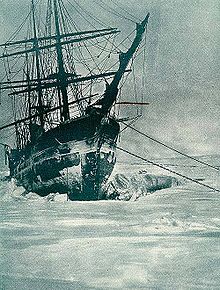- Rudolf Island
-
Prince Rudolf Land, Crown Prince Rudolf Land, Prince Rudolf Island or Rudolf Island (Russian: Остров Рудольфа) is the northernmost island of the Franz Josef Archipelago, Russia. The island was named by the Austro-Hungarian North Pole Expedition in honor of Archduke Rudolf (1858–1889), Crown Prince of Austria, Hungary and Bohemia. It belongs to the Arkhangelsk Oblast administrative region of the Russian Federation.
Rudolf Island is almost completely glacierized. It is located at 81°46′02″N 58°33′36″E / 81.767222°N 58.56°ECoordinates: 81°46′02″N 58°33′36″E / 81.767222°N 58.56°E, very close to the limit of permanent Polar ice. Its highest point is 461 m (1,512 ft). Because of its location, the island has served as a staging area for numerous polar expeditions. During the second International Polar Year, a weather station established on the island was the northernmost scientific outpost in the world.[1]
Sheltered Teplitz Bay has been used as a stopping point for northbound ships. During 1899-1900, an expedition led by Prince Luigi Amedeo, Duke of the Abruzzi stopped in the area. The Ziegler Polar Expedition of 1903–1905, led by Anthony Fiala left a large hut here.
Due to the steep terrain in Rudolf Island, the only airfield access is a small snow strip 300 m (1,000 ft) up a glacier. It was constructed in 1936 as a staging area for the world's first drift ice station, North Pole-1.[1]
Cape Fligely, located on Rudolf Island's northern shore, is the northernmost point of Europe and Russia.
References
- Althoff, William F. Drift Station: Arctic outposts of superpower science. Potomac Books Inc., Dulles, Virginia. 2007.
- [1]
- William Barr, The First Tourist Cruise in the Soviet Arctic.
- Fate of two polar expeditions in Rudolf Island
External links

This Arkhangelsk Oblast location article is a stub. You can help Wikipedia by expanding it.


